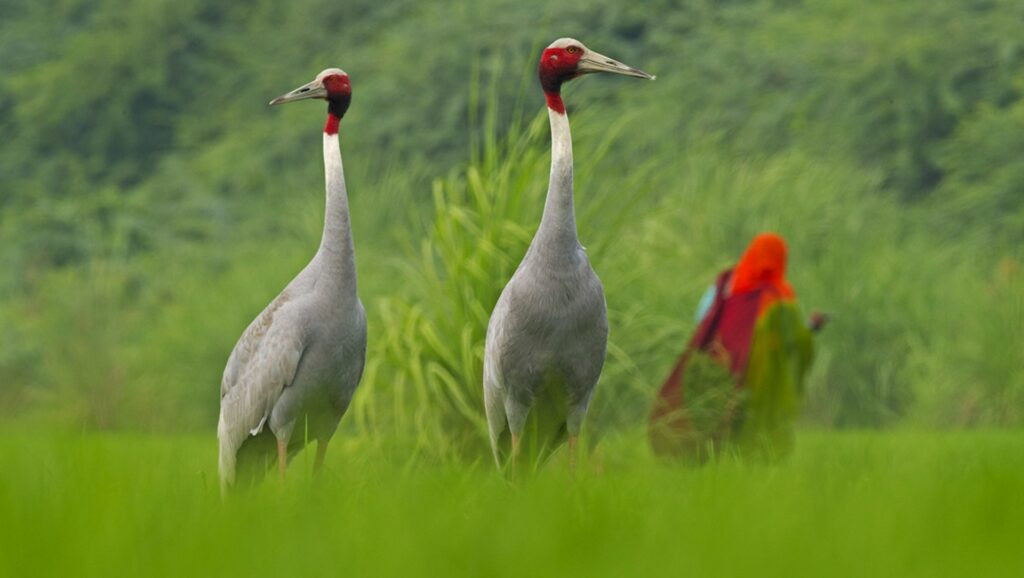The majestic Sarus crane, once a common sight in the wetlands of Kanchanpur and Kailali, is experiencing a worrying decline in numbers each year. Flocks that once graced these vital ecosystems are now increasingly rare, raising serious concerns among conservationists.
A primary driver of this decline is the relentless encroachment on wetland areas, which are being converted for agricultural use. This shrinking habitat directly impacts the cranes' ability to find food and suitable nesting sites, essential for their survival.
Hirulal Dagaura, an ornithologist with the Nepal Bird Conservation Society, highlights additional grave threats to the species. He points to the escalating use of chemical fertilizers and pesticides by farmers, which contaminates the cranes' food sources and environment. Furthermore, illegal hunting, the theft of eggs, climate change, and pervasive environmental pollution are collectively pushing the Sarus crane towards an existential crisis.
Dagaura's observations indicate a stark reality: only up to five Sarus cranes have been recorded in Kailali and a mere 22 in Kanchanpur. These iconic birds are typically found in specific locations such as Kalikich Lake within Shuklaphanta National Park and the wetlands of Beldandi Rural Municipality. During the rainy season, they are occasionally seen foraging in rice fields in other areas and at the Ramsar site of Ghodaghodi Lake in Kailali.
Sarus cranes play a vital ecological role, beneficial to farmers as they feed on insects considered harmful to crops, thereby naturally controlling pests and potentially increasing agricultural yields. However, despite their beneficial nature, the birds themselves are now critically endangered.
Their importance extends beyond pest control; these intelligent birds also act as an early warning system for humans. When predators like tigers, leopards, foxes, and wild boars approach, the Sarus crane emits a loud, distinct call, alerting nearby residents. This characteristic has earned them the reputation of being a human-friendly species.
Ornithologist Dagaura emphasizes that the cranes depend heavily on paddy fields and wetlands for nesting and feeding. "In recent days, it has become increasingly difficult to spot this bird here," he lamented. "Therefore, it is imperative for municipalities and local communities to prioritize the protection of wetland areas. Alongside raising awareness about the bird's significance, its habits, behavior, and habitat should be widely publicized to actively involve residents in conservation efforts."
Experts are urging farmers to adopt sustainable agricultural practices, particularly promoting the use of organic fertilizers and pesticides while actively discouraging harmful chemical alternatives.
The Sarus crane is a protected bird under Nepal's National Park and Wildlife Conservation Act 2029, and the International Union for Conservation of Nature (IUCN) has classified it as a vulnerable species globally. While statistics suggest over 600 Sarus cranes exist in Rupandehi, Kapilbastu, and Nawalparasi alone, and an estimated ten thousand across South Asia, the dwindling numbers in Kanchanpur and Kailali serve as a stark reminder of the urgent need for enhanced conservation actions.


.gif)






.jpeg)
.gif)

































